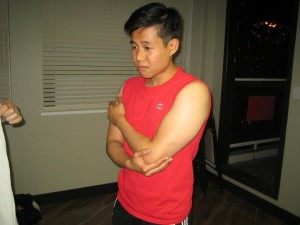Trigger finger is also known as stenosing tenosynovitis which is a condition where one of the fingers gets stuck in a bent position. The finger can straighten with a snap similar to a trigger that is being pulled and released.
[youtube url=”https://www.youtube.com/watch?v=iAIzUb4cl4M”]Trigger finger happens when inflammation causes narrowing of the space found within the sheath that is surrounding the tendon in the affected finger. If the trigger finger becomes severe, the fingers become locked in a bent position. Jobs or hobbies that require repetitive gripping actions can put an individual at risk to develop trigger finger. Women and those suffering from diabetes are also susceptible to trigger finger.
Causes
- Trigger finger is more common among women than in men.
- People suffering from conditions such as hypothyroidism, rheumatoid arthritis, diabetes and amyloidosis are susceptible to develop trigger finger.
- Gout and congestive heart failure can also cause trigger finger
- People over 40 years old and less than 6 years old are also prone to trigger finger.
- Gripping an item or object for a long periods of time such as a tool or musical instrument can also cause trigger finger.
- A condition that affects the fingers in the hand and causes them bend into the palm which is known as dupuytren’s contracture can cause trigger finger.
Stiffness or a clicking sound can be heard in the fingers especially in the morning when moving the affected finger. - A disease affecting the tendons in the thumb and pain in the wrist.
Symptoms
- Stiffness or a clicking sound can be heard in the fingers especially in the morning when moving the affected finger.
- Tenderness of the affected finger
- A bump or nodule can found at the base of the affected finger
- Pain when pressing the area around the finger
- A finger that is stuck in a bent position and snaps in a straight position
- Trigger finger usually happen in the dominant hand and develops in the thumb, middle or ring finger.
Treatment
- Wear a splint around the affected area for at least 6 weeks to allow the joints to rest and promote a faster healing process. It also helps lessen unwanted movements of the hand and prevents the hands from curling up while sleeping and cause stiffness in the morning.
- Get plenty of rest and avoid performing repetitive movements in order to minimize the stiffness and lessen the inflammation.
- Soak the affected fingers in warm water in order to lessen trigger finger attacks during the day. While soaking the fingers in warm water, rotate the hands and fingers gently. This should be performed every day in the morning for several times throughout the day.
- Perform hand and finger exercises in order to help increase the mobility of the fingers and strengthen the muscles around it. A physical therapist can help with some exercises for the hand and fingers.
- Massage the hands in order to help lessen the pain felt in the fingers and minimize the inflammation.

